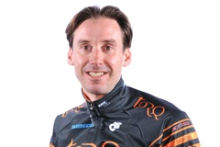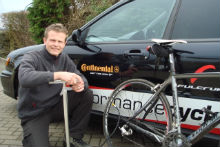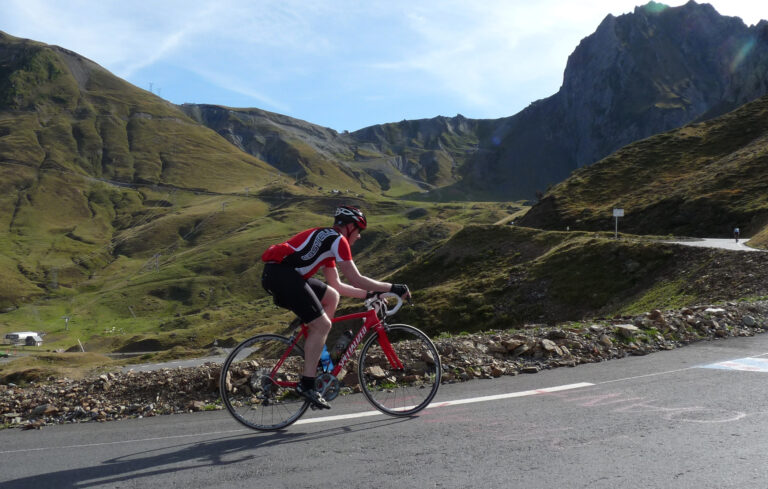
- Pic: La Fuga
Following on from last week’s brief interruption, which looked at commuting as training, this week we’ll resume our look at the principles of conditioning that govern training adaptations. One of them is that, in order to get better, you should ensure that your training is meeting your individual needs and is event-specific.
Principles of conditioning 6: Individual differences
This is fairly self-evident from the title, but you’d be amazed how many people try to adopt training programmes written for other athletes that they see achieving success, in the belief that the same thing will work for them. The most extreme case of this I recently came across was of a promising but relatively inexperienced road racer who found a detailed training programme followed by one of the leading Tour riders on a website somewhere and tried to follow it, letter for letter.
The fact that he was not a professional cyclist, didn’t have any of the support network, experience, long-term development or, frankly, raw talent of the pro in question didn’t enter into it. Neither did the fact that our rider worked a 50-hour week at a fairly manual job. He just decided to start following the intensive weekly training programme of a Continental pro. I think he lasted about four days before dropping out exhausted, dispirited and looking for another, less demanding schedule to adopt.
Clearly this kind of approach is fraught with pitfalls. As is following the kind of generic, off-the-peg training programmes you see published in magazines and online. While the principles of conditioning we are covering in this series apply across the board to your training, individual differences mean that you should always ‘personalise’ your approach.
Good off-the-peg training programmes will explain the basic training principles, give examples of various training sessions and outline ways in which they should be tailored to your specific needs. Telling you to train for ‘x’ amount of hours at ‘y’ intensity is too non-specific, as the effects would be totally different from one person to the next. Available training time, experience, current fitness levels, lifestyle, goals and location are all factors that determine what kind of training programme you should be following and influence greatly how long how hard and how often you train. So, clearly, everyone’s needs are different.
For this reason, training with a group is not always suitable as you could be training to someone else’s schedule. That’s not say that group riding isn’t a highly valuable form of training; it certainly can be. Just make sure you know what kind of training you are actually undertaking when riding with a group. You’d be amazed at the speeds you can average when being ‘towed’ along as part of a fast moving group, but, if you looked at a power trace post-ride, the lack of effort required to do so can be quite startling. There’s nothing wrong with that as long as you were intending to have a fairly easy ride. Bear in mind that the riders who seem keen to spend all that time at the front of the group are getting an entirely different workout to you.
So, pick the groups you ride with carefully to ensure that you get the training benefits specific to your individual needs and be aware that others in the group might have an entirely different agenda to yours.
Principles of conditioning 7: Specificity
Specificity as a principle of conditioning dictates that adaptations that result from training are specific to the kind of training undertaken. A pretty straightforward example would be that, if you wanted to improve your sprint because your local one-hour criterium almost always came down to a bunch finish, spending 15 hours per week riding in the hills at aerobic endurance pace wouldn’t do much to get you across the line first after the high-octane final few laps of a 60 minute race.
Clearly, you want to be training this system by riding at very high intensity and finishing with a maximal all-out effort. This is common sense, but again the number of riders I meet who spend their time doing high volumes of riding at an intensity they rarely ever see during their events is alarming. Most common are riders who migrate towards high volumes of ‘middle ground’ training intensity. This is an area you rarely encounter when road racing for example as you’re normally either riding in an inactive bunch and therefore not working too hard or riding hard as part of a chase/attack/sprint for the line when you’re close to the limit of your physical capacity. So a road racer’s training should reflect that. If, however, you’re training to ride at the competitive end of sportives, this intensity would be more justifiable.
A time-triallist’s specific pace depends largely on event distance or time. A ‘25’ specialist will be required to perform at ‘threshold’, the kind of intensity they can sustain for an hour, whereas distance riders such as 100milers and 12 or 24 hour specialists will base their training on ‘critical’ intensity – the kind of pace that they can sustain for the duration of their event. But, taking specificity into account, they’ll also need to be thinking about sustaining that kind of intensity in an aerodynamic ‘tuck’ – a fairly un-natural position to maintain on a bicycle. So the ‘flexibility’ component of fitness becomes very specific to TT riders, as it helps them to maintain this un-natural position while sustaining optimum power output.
Another good example of specificity is mountain bike racers, who need a higher degree of upper body strength. Ask any off-road racer who’s competed in heavy course conditions and they’ll tell you that the amount of upper-body work required to ‘muscle’ the bike around technical trails can be highly demanding on the energy reserves.
Technical downhills, where the rider might not even be pedalling, can be very demanding on the ‘strength’ component of fitness. All this before we’ve even considered the fact that they might have to get off and carry a bike weighting over 30lbs because it’s gathered so much mud uphill several times during the course of a race that might last several hours. Suddenly, one-hour sessions riding on the road don’t look very specific to MTB racers, eh?
So, it’s always good to have a basic understanding of training intensities and the components of fitness (all of which we’re covering in this series) in order to be aware of what it is you’re actually training each and every time you get on the bike or hit the gym. Bear in mind both the specifics of your event and your individual needs when devising your training to prepare for them.
Consider everything from the intensities involved, the duration of the event, the physical demands in terms of bike position and set-up, terrain, course profile, standard of competition and nutritional needs, and even the psychological and tactical requirements of the event, when setting out on a training programme. If you constantly ask yourself; “Does the training session I am about to do fit in to the training plan for my target event?” and come up with an answer in the affirmative, then you’re on the right lines. If you can only answer “no”, then you’re not training for results, you’re just riding your bike.
About the author:
Huw Williams is a British Cycling Level 3 road and time trial coach. He has raced on and off road all over the world and completed all the major European sportives. He has written training and fitness articles for a wide number of UK and international cycling publications and websites and as head of La Fuga Performance, coaches a number of riders from enthusiastic novices to national standard racers.
Contact: [email protected]






